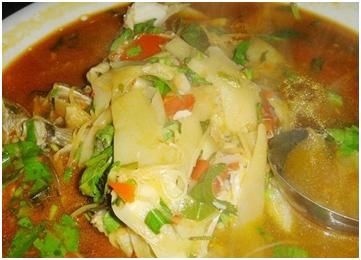program程序代做、代寫Python/C++編程設計
時間:2024-06-05 來源: 作者: 我要糾錯
Open-Ended ROS-Based Assignment
In this innovative project, you are invited to creatively exploit the capabilities of the Robot
Operating System (ROS) to design and implement a robotic system (we expect that the robot
can operate either in a simulated environment like Gazebo or in the real world). The objective
is to apply and integrate advanced robotics technologies in a way that showcases your
technical skills, understanding of robotics concepts, and ability to innovate. You have the
freedom to choose your project theme, but your system must adhere to the criteria listed
below to earn points. The total score for this project is capped at 100 points, even if the sum
of individual criteria exceeds this limit.
Scoring Criteria
Real Robot Implementation (40 Points): Implement your project on a real robot,
demonstrating physical interaction with the environment.
Simulation Software Usage (30 Points): Utilise a simulation software such as Gazebo to
programme and demonstrate the capabilities of your robotic system.
Autonomous Operation (30 Points): Adopt a system where the robot operates autonomously
rather than being manually controlled.
Sensor-based Behaviour (30 Points): The robot reacts based on real-time sensor data.
Custom Node Development (10 Points): Develop and integrate at least one custom ROS
node that you have created from scratch.
Navigation Algorithm (10 Points): Incorporate a navigation algorithm that enables the robot to
move or plan paths effectively within its environment.
Artificial Intelligence Integration (30 Points): Integrate an AI algorithm, potentially
incorporating deep learning technologies, to enhance the robot's decision-making or task
execution capabilities.
Multi-language Node Development (20 Points): Integrate nodes using multiple programming
languages (e.g., Python and C++), demonstrating versatility and integration skills.
Map Utilisation (20 Points): Utilise map data for navigation or task execution, showing the
robot's ability to understand and interact with its spatial environment.
Map Drawing (20 Points): Equip your robot with the ability to create or update a map of its
environment as it navigates through it.
Environment Modification (20 Points): The robot is designed to alter its environment in some
tangible way.
Submission Requirements
Project Code: Submit all source code files utilised in the development of your project. Video Evidence: Provide a video recorded on a mobile phone or camera that captures the
following elements (NB: video evidence cannot be edited and must be shot to the end.):
l Team Members: The video must include footage of all team members who contributed
to the project.
l Robot Setup: Document the setup process of the robotic system, showing the equipment
(or simulator) and any necessary configurations.
l Startup Process: Record the sequence of actions taken to start the robot.
l Main Functionalities: Showcase the primary functions of the robot as it operates.
Highlight key features and capabilities as outlined in the scoring criteria, clearly showing
how the robot fulfills each task.
Project Report: Submit a detailed report that includes:
l An overview of your project and its objectives.
l A list of scoring criteria that your robot achieves.
l A description of the robotic system and each of its components.
l An explanation of how each component contributes to the project objectives.
Group workload profile: Detail the contributions of each group member including:
l Name, student Id, and signature of each group member
l Specifying roles and responsibilities
l Individual contribution level i.e.:
n 0% - I contributed the same as my team members
n +X% I contributed more than my team members by a specific amount X% (see below)
n -X% I contributed less than my team members by a specific amount X% (see below)
n X% = 10%, 25%, 50%, 100%
請加QQ:99515681 郵箱:99515681@qq.com WX:codinghelp
標簽:
掃一掃在手機打開當前頁
注:本網(wǎng)條致力提供真實有用信息,所轉(zhuǎn)載的內(nèi)容,其版權均由原作者和資料提供方所擁有!若有任何不適煩請聯(lián)系我們,將會在24小時內(nèi)刪除。
無相關信息 昆明生活資訊
推薦信息
相關文章
無相關信息















